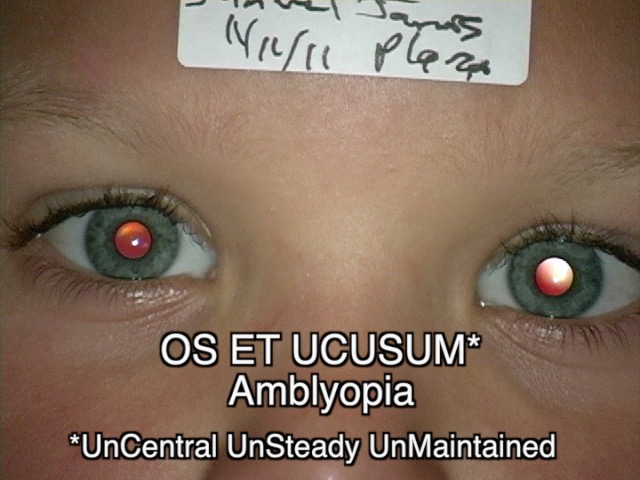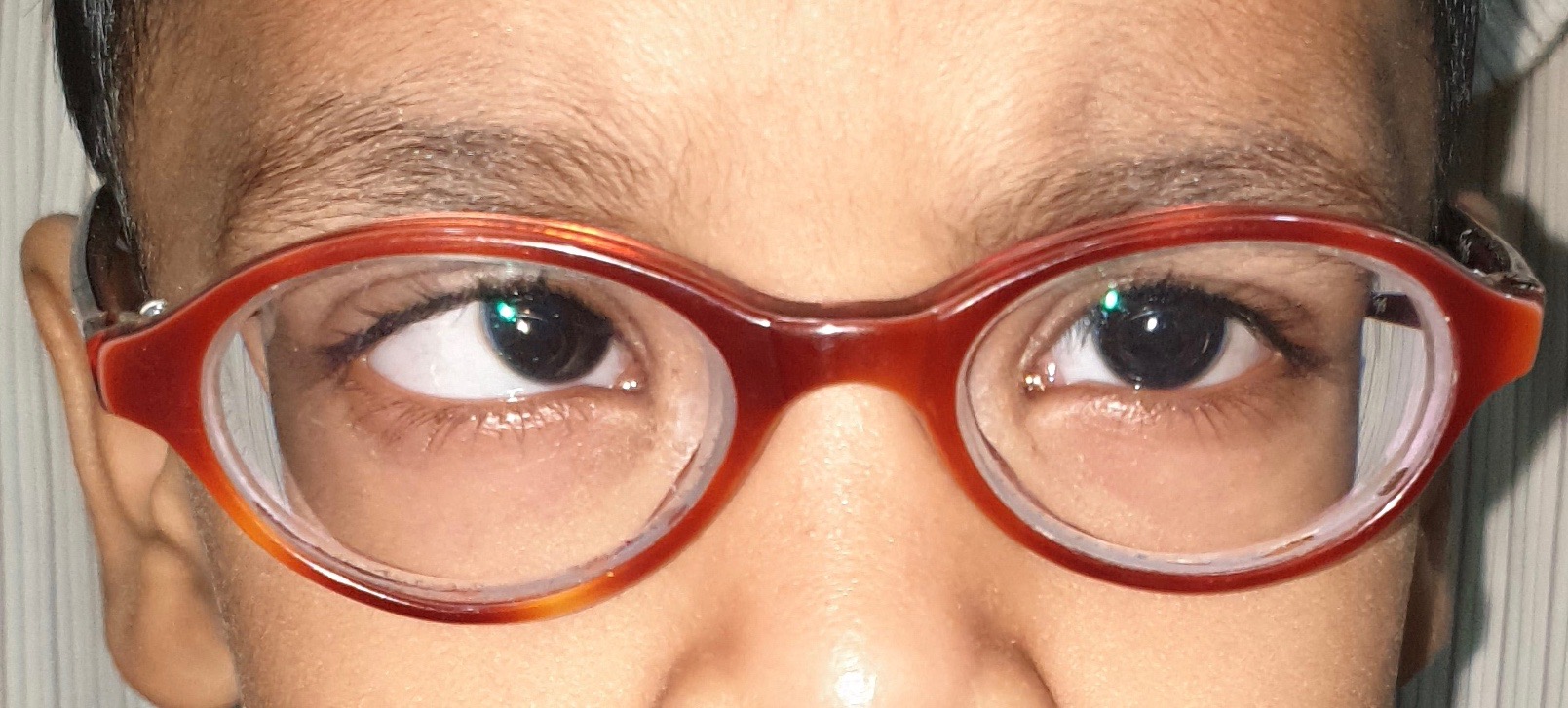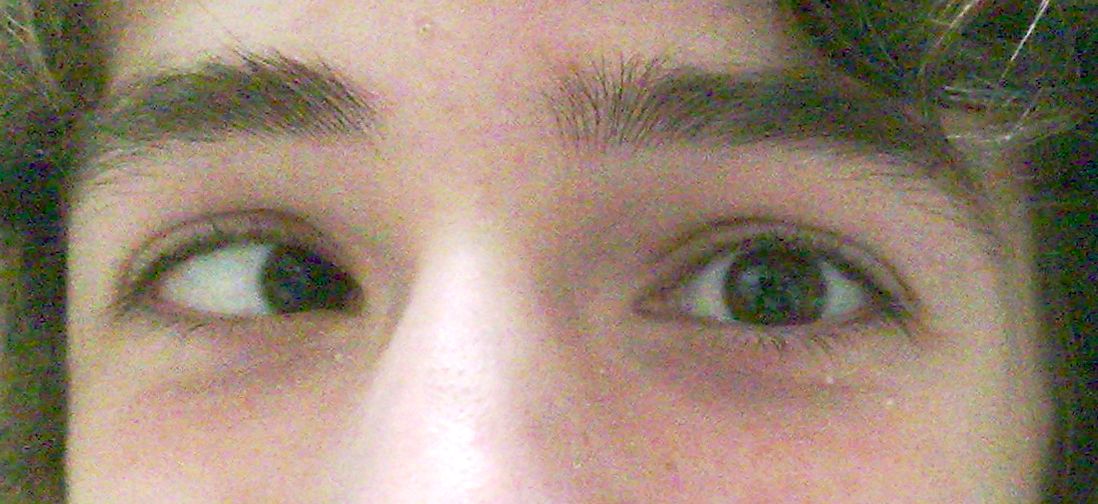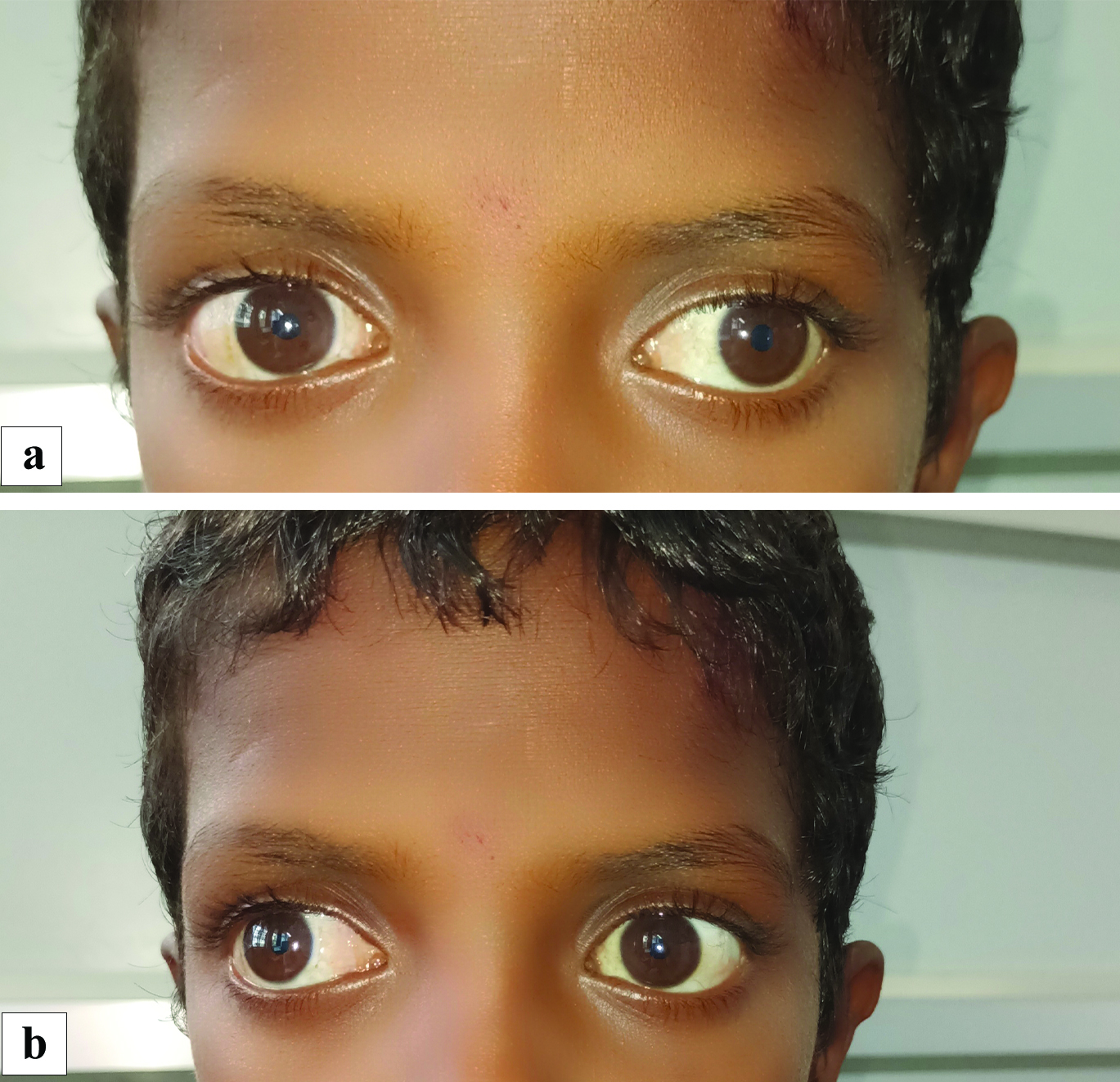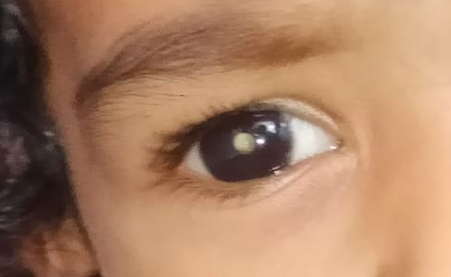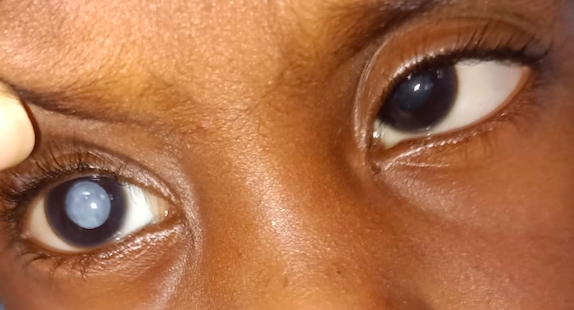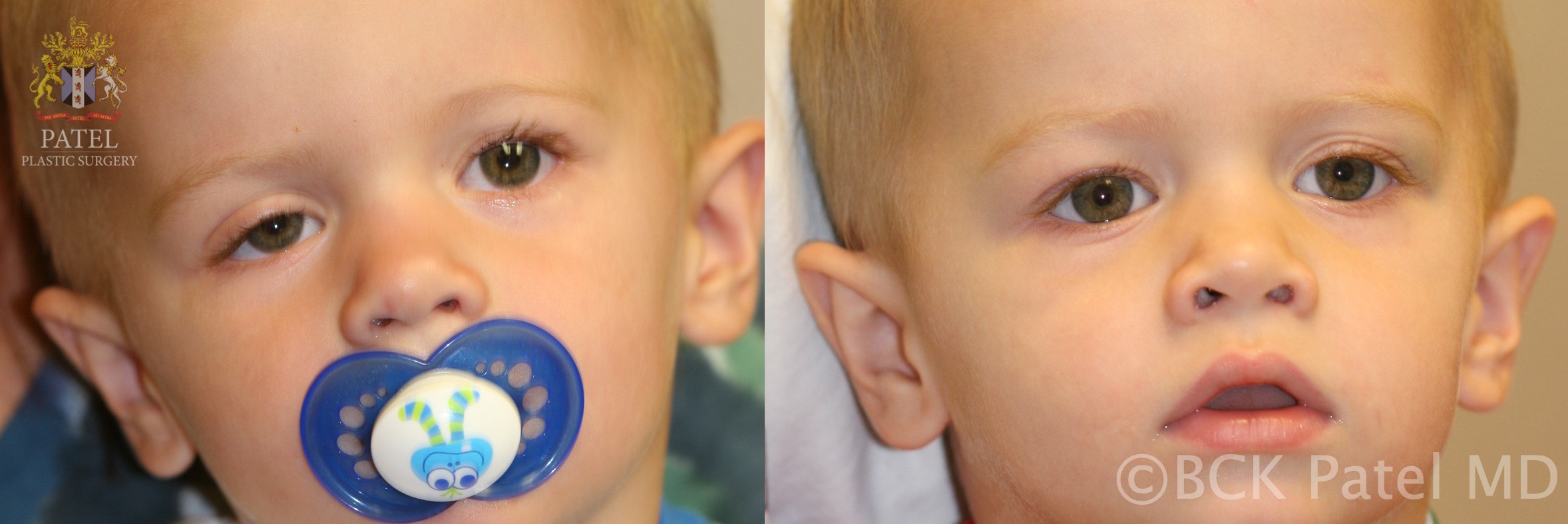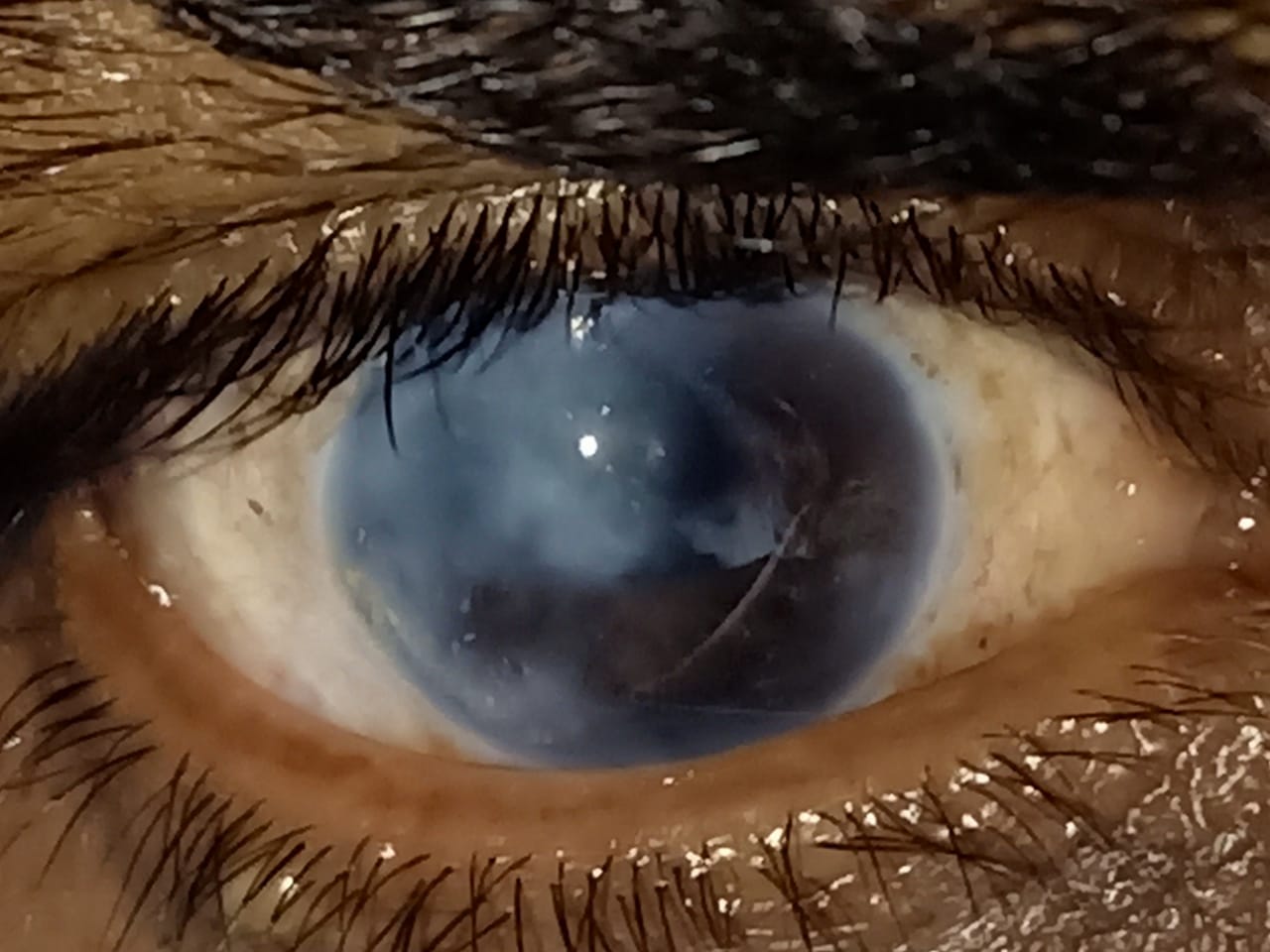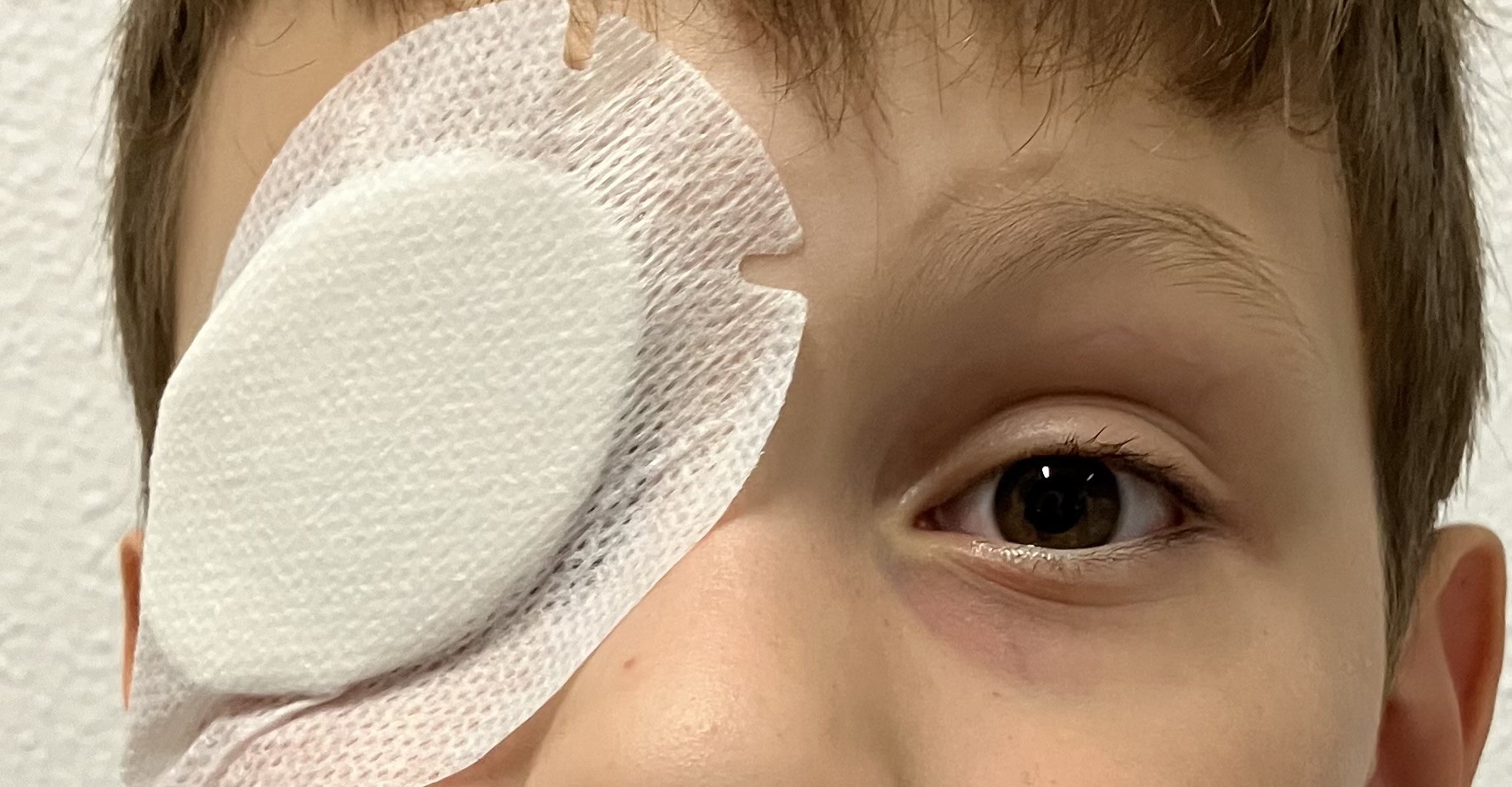[1]
Levi DM. Amblyopia. Handbook of clinical neurology. 2021:178():13-30. doi: 10.1016/B978-0-12-821377-3.00002-7. Epub
[PubMed PMID: 33832673]
[2]
Birch EE, Subramanian V, Weakley DR. Fixation instability in anisometropic children with reduced stereopsis. Journal of AAPOS : the official publication of the American Association for Pediatric Ophthalmology and Strabismus. 2013 Jun:17(3):287-90. doi: 10.1016/j.jaapos.2013.03.011. Epub
[PubMed PMID: 23791411]
[3]
Webber AL. The functional impact of amblyopia. Clinical & experimental optometry. 2018 Jul:101(4):443-450. doi: 10.1111/cxo.12663. Epub 2018 Feb 26
[PubMed PMID: 29484704]
[4]
Seignette K, Levelt CN. Amblyopia: The Thalamus Is a No-Go Area for Visual Acuity. Current biology : CB. 2018 Jun 18:28(12):R709-R712. doi: 10.1016/j.cub.2018.04.081. Epub
[PubMed PMID: 29920266]
[5]
Hunter D, Cotter S. Early diagnosis of amblyopia. Visual neuroscience. 2018 Jan:35():E013. doi: 10.1017/S0952523817000207. Epub
[PubMed PMID: 29905128]
[6]
Bangerter A. Treatment of amblyopia: Part 3 Apparatus, exercise equipment and games (continued). Strabismus. 2018 Jun:26(2):106-109. doi: 10.1080/09273972.2018.1463676. Epub
[PubMed PMID: 29952715]
[7]
Cruz OA, Repka MX, Hercinovic A, Cotter SA, Lambert SR, Hutchinson AK, Sprunger DT, Morse CL, Wallace DK, American Academy of Ophthalmology Preferred Practice Pattern Pediatric Ophthalmology/Strabismus Panel. Amblyopia Preferred Practice Pattern. Ophthalmology. 2023 Mar:130(3):P136-P178. doi: 10.1016/j.ophtha.2022.11.003. Epub 2022 Dec 14
[PubMed PMID: 36526450]
[8]
Repka MX. Amblyopia Outcomes Through Clinical Trials and Practice Measurement: Room for Improvement: The LXXVII Edward Jackson Memorial Lecture. American journal of ophthalmology. 2020 Nov:219():A1-A26. doi: 10.1016/j.ajo.2020.07.053. Epub 2020 Aug 7
[PubMed PMID: 32777377]
[9]
Hamm L, Chen Z, Li J, Black J, Dai S, Yuan J, Yu M, Thompson B. Interocular suppression in children with deprivation amblyopia. Vision research. 2017 Apr:133():112-120. doi: 10.1016/j.visres.2017.01.004. Epub 2017 Mar 30
[PubMed PMID: 28214552]
[10]
Sen S, Singh P, Saxena R. Management of amblyopia in pediatric patients: Current insights. Eye (London, England). 2022 Jan:36(1):44-56. doi: 10.1038/s41433-021-01669-w. Epub 2021 Jul 7
[PubMed PMID: 34234293]
[11]
Pascual M, Huang J, Maguire MG, Kulp MT, Quinn GE, Ciner E, Cyert LA, Orel-Bixler D, Moore B, Ying GS, Vision In Preschoolers (VIP) Study Group. Risk factors for amblyopia in the vision in preschoolers study. Ophthalmology. 2014 Mar:121(3):622-9.e1. doi: 10.1016/j.ophtha.2013.08.040. Epub 2013 Oct 18
[PubMed PMID: 24140117]
[13]
Şahin Karamert S, Atalay HT, Özdek Ş. Strabismus in Retinopathy of Prematurity: Risk Factors and the Effect of Macular Ectopia. Turkish journal of ophthalmology. 2023 Aug 19:53(4):241-246. doi: 10.4274/tjo.galenos.2023.48310. Epub
[PubMed PMID: 37602650]
[14]
Hamm LM, Chen Z, Li J, Dai S, Black J, Yuan J, Yu M, Thompson B. Contrast-balanced binocular treatment in children with deprivation amblyopia. Clinical & experimental optometry. 2018 Jul:101(4):541-552. doi: 10.1111/cxo.12630. Epub 2017 Nov 28
[PubMed PMID: 29193320]
[15]
Cheng KP, Hiles DA, Biglan AW, Pettapiece MC. Visual results after early surgical treatment of unilateral congenital cataracts. Ophthalmology. 1991 Jun:98(6):903-10
[PubMed PMID: 1866144]
[16]
Elhusseiny AM, Wu C, MacKinnon S, Hunter DG. Severe reverse amblyopia with atropine penalization. Journal of AAPOS : the official publication of the American Association for Pediatric Ophthalmology and Strabismus. 2020 Apr:24(2):106-108. doi: 10.1016/j.jaapos.2019.12.001. Epub 2020 Jan 15
[PubMed PMID: 31953022]
[17]
Pediatric Eye Disease Investigator Group.. A randomized trial of atropine vs. patching for treatment of moderate amblyopia in children. Archives of ophthalmology (Chicago, Ill. : 1960). 2002 Mar:120(3):268-78
[PubMed PMID: 11879129]
Level 1 (high-level) evidence
[18]
de Zárate BR, Tejedor J. Current concepts in the management of amblyopia. Clinical ophthalmology (Auckland, N.Z.). 2007 Dec:1(4):403-14
[PubMed PMID: 19668517]
[19]
Holmes JM, Levi DM. Treatment of amblyopia as a function of age. Visual neuroscience. 2018 Jan:35():E015. doi: 10.1017/S0952523817000220. Epub
[PubMed PMID: 29905125]
[20]
Kiorpes L, Daw N. Cortical correlates of amblyopia. Visual neuroscience. 2018 Jan:35():E016. doi: 10.1017/S0952523817000232. Epub
[PubMed PMID: 29905122]
[21]
Levi DM. Rethinking amblyopia 2020. Vision research. 2020 Nov:176():118-129. doi: 10.1016/j.visres.2020.07.014. Epub 2020 Aug 28
[PubMed PMID: 32866759]
[22]
Davidson S, Quinn GE. The impact of pediatric vision disorders in adulthood. Pediatrics. 2011 Feb:127(2):334-9. doi: 10.1542/peds.2010-1911. Epub 2011 Jan 3
[PubMed PMID: 21199855]
[23]
Webber AL, Wood J. Amblyopia: prevalence, natural history, functional effects and treatment. Clinical & experimental optometry. 2005 Nov:88(6):365-75
[PubMed PMID: 16329744]
[24]
Hu B, Liu Z, Zhao J, Zeng L, Hao G, Shui D, Mao K. The Global Prevalence of Amblyopia in Children: A Systematic Review and Meta-Analysis. Frontiers in pediatrics. 2022:10():819998. doi: 10.3389/fped.2022.819998. Epub 2022 May 4
[PubMed PMID: 35601430]
Level 1 (high-level) evidence
[25]
Hashemi H, Pakzad R MSc, Yekta A, Bostamzad P, Aghamirsalim M, Sardari S MSc, Valadkhan M MSc, Pakbin M MSc, Heydarian S, Khabazkhoob M. Global and regional estimates of prevalence of amblyopia: A systematic review and meta-analysis. Strabismus. 2018 Dec:26(4):168-183. doi: 10.1080/09273972.2018.1500618. Epub 2018 Jul 30
[PubMed PMID: 30059649]
Level 1 (high-level) evidence
[26]
Nitzan I, Bez M, Megreli J, Bez D, Barak A, Yahalom C, Levine H. Socio-demographic disparities in amblyopia prevalence among 1.5 million adolescents. European journal of public health. 2021 Dec 1:31(6):1211-1217. doi: 10.1093/eurpub/ckab111. Epub
[PubMed PMID: 34518882]
[27]
Xiao O, Morgan IG, Ellwein LB, He M, Refractive Error Study in Children Study Group. Prevalence of Amblyopia in School-Aged Children and Variations by Age, Gender, and Ethnicity in a Multi-Country Refractive Error Study. Ophthalmology. 2015 Sep:122(9):1924-31. doi: 10.1016/j.ophtha.2015.05.034. Epub 2015 Aug 13
[PubMed PMID: 26278861]
[28]
Aldebasi YH. Prevalence of amblyopia in primary school children in Qassim province, Kingdom of Saudi Arabia. Middle East African journal of ophthalmology. 2015 Jan-Mar:22(1):86-91. doi: 10.4103/0974-9233.148355. Epub
[PubMed PMID: 25624680]
[29]
Fu J, Li SM, Liu LR, Li JL, Li SY, Zhu BD, Li H, Yang Z, Li L, Wang NL, Anyang Childhood Eye Study Group. Prevalence of amblyopia and strabismus in a population of 7th-grade junior high school students in Central China: the Anyang Childhood Eye Study (ACES). Ophthalmic epidemiology. 2014 Jun:21(3):197-203. doi: 10.3109/09286586.2014.904371. Epub 2014 Apr 17
[PubMed PMID: 24742059]
[30]
Fu Z, Hong H, Su Z, Lou B, Pan CW, Liu H. Global prevalence of amblyopia and disease burden projections through 2040: a systematic review and meta-analysis. The British journal of ophthalmology. 2020 Aug:104(8):1164-1170. doi: 10.1136/bjophthalmol-2019-314759. Epub 2019 Nov 8
[PubMed PMID: 31704700]
Level 1 (high-level) evidence
[31]
Chia A, Lin X, Dirani M, Gazzard G, Ramamurthy D, Quah BL, Chang B, Ling Y, Leo SW, Wong TY, Saw SM. Risk factors for strabismus and amblyopia in young Singapore Chinese children. Ophthalmic epidemiology. 2013 Jun:20(3):138-47. doi: 10.3109/09286586.2013.767354. Epub
[PubMed PMID: 23713916]
[32]
Xu Z, Wu Z, Wen Y, Ding M, Sun W, Wang Y, Shao Z, Liu Y, Yu M, Liu G, Hu Y, Bi H. Prevalence of anisometropia and associated factors in Shandong school-aged children. Frontiers in public health. 2022:10():1072574. doi: 10.3389/fpubh.2022.1072574. Epub 2022 Dec 22
[PubMed PMID: 36620276]
[33]
Tarczy-Hornoch K, Varma R, Cotter SA, McKean-Cowdin R, Lin JH, Borchert MS, Torres M, Wen G, Azen SP, Tielsch JM, Friedman DS, Repka MX, Katz J, Ibironke J, Giordano L, Joint Writing Committee for the Multi-Ethnic Pediatric Eye Disease Study and the Baltimore Pediatric Eye Disease Study Groups. Risk factors for decreased visual acuity in preschool children: the multi-ethnic pediatric eye disease and Baltimore pediatric eye disease studies. Ophthalmology. 2011 Nov:118(11):2262-73. doi: 10.1016/j.ophtha.2011.06.033. Epub 2011 Aug 19
[PubMed PMID: 21856014]
[34]
Afsari S, Rose KA, Gole GA, Philip K, Leone JF, French A, Mitchell P. Prevalence of anisometropia and its association with refractive error and amblyopia in preschool children. The British journal of ophthalmology. 2013 Sep:97(9):1095-9. doi: 10.1136/bjophthalmol-2012-302637. Epub 2013 Apr 23
[PubMed PMID: 23613508]
[35]
Attebo K, Mitchell P, Cumming R, Smith W, Jolly N, Sparkes R. Prevalence and causes of amblyopia in an adult population. Ophthalmology. 1998 Jan:105(1):154-9
[PubMed PMID: 9442792]
[36]
Pathai S, Cumberland PM, Rahi JS. Prevalence of and early-life influences on childhood strabismus: findings from the Millennium Cohort Study. Archives of pediatrics & adolescent medicine. 2010 Mar:164(3):250-7. doi: 10.1001/archpediatrics.2009.297. Epub
[PubMed PMID: 20194258]
[37]
Duan Y, Norcia AM, Yeatman JD, Mezer A. The Structural Properties of Major White Matter Tracts in Strabismic Amblyopia. Investigative ophthalmology & visual science. 2015 Aug:56(9):5152-60. doi: 10.1167/iovs.15-17097. Epub
[PubMed PMID: 26241402]
[38]
Varma R, Tarczy-Hornoch K, Jiang X. Visual Impairment in Preschool Children in the United States: Demographic and Geographic Variations From 2015 to 2060. JAMA ophthalmology. 2017 Jun 1:135(6):610-616. doi: 10.1001/jamaophthalmol.2017.1021. Epub
[PubMed PMID: 28472231]
[39]
Lin HW, Young ML, Pu C, Huang CY, Lin KK, Lee JS, Hou CH. Changes in anisometropia by age in children with hyperopia, myopia, and antimetropia. Scientific reports. 2023 Aug 22:13(1):13643. doi: 10.1038/s41598-023-40831-0. Epub 2023 Aug 22
[PubMed PMID: 37608064]
[40]
Mendola JD, Lam J, Rosenstein M, Lewis LB, Shmuel A. Partial correlation analysis reveals abnormal retinotopically organized functional connectivity of visual areas in amblyopia. NeuroImage. Clinical. 2018:18():192-201. doi: 10.1016/j.nicl.2018.01.022. Epub 2018 Jan 31
[PubMed PMID: 29868445]
[41]
Kantarci FA, Tatar MG, Uslu H, Colak HN, Yildirim A, Goker H, Gurler B. Choroidal and peripapillary retinal nerve fiber layer thickness in adults with anisometropic amblyopia. European journal of ophthalmology. 2015 Sep-Oct:25(5):437-42. doi: 10.5301/ejo.5000594. Epub 2015 Mar 21
[PubMed PMID: 25837640]
[42]
Cevher S, Şahin T. Does anisometropia affect the ciliary muscle thickness? An ultrasound biomicroscopy study. International ophthalmology. 2020 Dec:40(12):3393-3402. doi: 10.1007/s10792-020-01625-9. Epub 2020 Oct 20
[PubMed PMID: 33083933]
[43]
Nishi T, Ueda T, Hasegawa T, Miyata K, Ogata N. Choroidal thickness in children with hyperopic anisometropic amblyopia. The British journal of ophthalmology. 2014 Feb:98(2):228-32. doi: 10.1136/bjophthalmol-2013-303938. Epub 2013 Nov 1
[PubMed PMID: 24187049]
[44]
Tekin K, Cankurtaran V, Inanc M, Sekeroglu MA, Yilmazbas P. Effect of myopic anisometropia on anterior and posterior ocular segment parameters. International ophthalmology. 2017 Apr:37(2):377-384. doi: 10.1007/s10792-016-0272-x. Epub 2016 Jun 4
[PubMed PMID: 27262559]
[45]
Bruce A, Pacey IE, Bradbury JA, Scally AJ, Barrett BT. Bilateral changes in foveal structure in individuals with amblyopia. Ophthalmology. 2013 Feb:120(2):395-403. doi: 10.1016/j.ophtha.2012.07.088. Epub 2012 Sep 29
[PubMed PMID: 23031668]
[46]
Meng C, Zhang Y, Wang S. Anisometropic amblyopia: A review of functional and structural changes and treatment. European journal of ophthalmology. 2023 Jul:33(4):1529-1535. doi: 10.1177/11206721221143164. Epub 2022 Nov 29
[PubMed PMID: 36448184]
[47]
Jang J, Kyung SE. Assessing amblyopia treatment using multifocal visual evoked potentials. BMC ophthalmology. 2018 Aug 13:18(1):196. doi: 10.1186/s12886-018-0877-0. Epub 2018 Aug 13
[PubMed PMID: 30103718]
[49]
Adams WE, Leske DA, Hatt SR, Holmes JM. Defining real change in measures of stereoacuity. Ophthalmology. 2009 Feb:116(2):281-5. doi: 10.1016/j.ophtha.2008.09.012. Epub 2008 Dec 16
[PubMed PMID: 19091410]
[54]
Lança CC, Rowe FJ. Measurement of fusional vergence: a systematic review. Strabismus. 2019 Jun:27(2):88-113. doi: 10.1080/09273972.2019.1583675. Epub 2019 Mar 1
[PubMed PMID: 30821611]
Level 1 (high-level) evidence
[55]
Hutchinson AK, Morse CL, Hercinovic A, Cruz OA, Sprunger DT, Repka MX, Lambert SR, Wallace DK, American Academy of Ophthalmology Preferred Practice Pattern Pediatric Ophthalmology/Strabismus Panel. Pediatric Eye Evaluations Preferred Practice Pattern. Ophthalmology. 2023 Mar:130(3):P222-P270. doi: 10.1016/j.ophtha.2022.10.030. Epub 2022 Dec 19
[PubMed PMID: 36543602]
[56]
Cotter SA, Tarczy-Hornoch K, Song E, Lin J, Borchert M, Azen SP, Varma R, Multi-Ethnic Pediatric Eye Disease Study Group. Fixation preference and visual acuity testing in a population-based cohort of preschool children with amblyopia risk factors. Ophthalmology. 2009 Jan:116(1):145-53. doi: 10.1016/j.ophtha.2008.08.031. Epub 2008 Oct 29
[PubMed PMID: 18962921]
[57]
Donahue SP, Baker CN, Committee on Practice and Ambulatory Medicine, American Academy of Pediatrics, Section on Ophthalmology, American Academy of Pediatrics, American Association of Certified Orthoptists, American Association for Pediatric Ophthalmology and Strabismus, American Academy of Ophthalmology. Procedures for the Evaluation of the Visual System by Pediatricians. Pediatrics. 2016 Jan:137(1):. doi: 10.1542/peds.2015-3597. Epub 2015 Dec 7
[PubMed PMID: 26644488]
[58]
Aljohani S, Aldakhil S, Alrasheed SH, Tan QQ, Alshammeri S. The Clinical Characteristics of Amblyopia in Children Under 17 Years of Age in Qassim Region, Saudi Arabia. Clinical ophthalmology (Auckland, N.Z.). 2022:16():2677-2684. doi: 10.2147/OPTH.S379550. Epub 2022 Aug 18
[PubMed PMID: 36003073]
[59]
Tam EK, Elhusseiny AM, Shah AS, Mantagos IS, VanderVeen DK. Etiology and outcomes of childhood glaucoma at a tertiary referral center. Journal of AAPOS : the official publication of the American Association for Pediatric Ophthalmology and Strabismus. 2022 Jun:26(3):117.e1-117.e6. doi: 10.1016/j.jaapos.2021.12.009. Epub 2022 Apr 8
[PubMed PMID: 35398512]
[60]
Fan DS, Rao SK, Ng JS, Yu CB, Lam DS. Comparative study on the safety and efficacy of different cycloplegic agents in children with darkly pigmented irides. Clinical & experimental ophthalmology. 2004 Oct:32(5):462-7
[PubMed PMID: 15498055]
Level 2 (mid-level) evidence
[61]
Wang C, Yu J, Pan M, Ye X, Song E. Macular pigment optical density of hyperopic anisometropic amblyopic patients measured by fundus reflectometry. Frontiers in medicine. 2022:9():991423. doi: 10.3389/fmed.2022.991423. Epub 2022 Oct 11
[PubMed PMID: 36304187]
[64]
Xiao JX, Xie S, Ye JT, Liu HH, Gan XL, Gong GL, Jiang XX. Detection of abnormal visual cortex in children with amblyopia by voxel-based morphometry. American journal of ophthalmology. 2007 Mar:143(3):489-93
[PubMed PMID: 17224120]
[65]
Choi MY, Lee KM, Hwang JM, Choi DG, Lee DS, Park KH, Yu YS. Comparison between anisometropic and strabismic amblyopia using functional magnetic resonance imaging. The British journal of ophthalmology. 2001 Sep:85(9):1052-6
[PubMed PMID: 11520755]
[66]
Bui Quoc E, Kulp MT, Burns JG, Thompson B. Amblyopia: A review of unmet needs, current treatment options, and emerging therapies. Survey of ophthalmology. 2023 May-Jun:68(3):507-525. doi: 10.1016/j.survophthal.2023.01.001. Epub 2023 Jan 18
[PubMed PMID: 36681277]
Level 3 (low-level) evidence
[67]
Powell C, Hatt SR. Vision screening for amblyopia in childhood. The Cochrane database of systematic reviews. 2009 Jul 8:(3):CD005020. doi: 10.1002/14651858.CD005020.pub3. Epub 2009 Jul 8
[PubMed PMID: 19588363]
Level 1 (high-level) evidence
[68]
Mema SC, McIntyre L, Musto R. Childhood vision screening in Canada: public health evidence and practice. Canadian journal of public health = Revue canadienne de sante publique. 2012 Jan-Feb:103(1):40-5
[PubMed PMID: 22338327]
[69]
Hambidge SJ, Emsermann CB, Federico S, Steiner JF. Disparities in pediatric preventive care in the United States, 1993-2002. Archives of pediatrics & adolescent medicine. 2007 Jan:161(1):30-6
[PubMed PMID: 17199064]
[70]
Wahl MD, Fishman D, Block SS, Baldonado KN, Friedman DS, Repka MX, Collins ME. A Comprehensive Review of State Vision Screening Mandates for Schoolchildren in the United States. Optometry and vision science : official publication of the American Academy of Optometry. 2021 May 1:98(5):490-499. doi: 10.1097/OPX.0000000000001686. Epub
[PubMed PMID: 33973910]
[71]
Lequeux L, Thouvenin D, Couret C, Audren F, Costet C, Dureau P, Leruez S, Defoordt-Dhellemmes S, Daien V, Espinasse Berrod MA, Arsene S, Lebranchu P, Denis D, Bui-Quoc E, Speeg-Schatz C. [Vision screening for children: Recommended practices from AFSOP]. Journal francais d'ophtalmologie. 2021 Feb:44(2):244-251. doi: 10.1016/j.jfo.2020.07.005. Epub 2020 Dec 30
[PubMed PMID: 33388188]
[72]
Tailor V, Bossi M, Greenwood JA, Dahlmann-Noor A. Childhood amblyopia: current management and new trends. British medical bulletin. 2016 Sep:119(1):75-86. doi: 10.1093/bmb/ldw030. Epub 2016 Aug 19
[PubMed PMID: 27543498]
[73]
Handa S, Chia A. Amblyopia therapy in Asian children: factors affecting visual outcome and parents' perception of children's attitudes towards amblyopia treatment. Singapore medical journal. 2019 Jun:60(6):291-297. doi: 10.11622/smedj.2018151. Epub 2018 Nov 29
[PubMed PMID: 30488078]
[74]
Jeong SH, Kim US. Ten-Year Results of Home Vision-Screening Test in Children Aged 3-6 Years in Seoul, Korea. Seminars in ophthalmology. 2015:30(5-6):383-8. doi: 10.3109/08820538.2014.912335. Epub 2014 May 8
[PubMed PMID: 24809740]
[75]
Hunter D. Amblyopia: The clinician's view. Visual neuroscience. 2018 Jan:35():E011. doi: 10.1017/S0952523817000189. Epub
[PubMed PMID: 29905115]
[76]
Chen AM, Cotter SA. The Amblyopia Treatment Studies: Implications for Clinical Practice. Advances in ophthalmology and optometry. 2016 Aug:1(1):287-305. doi: 10.1016/j.yaoo.2016.03.007. Epub
[PubMed PMID: 28435934]
Level 3 (low-level) evidence
[77]
Peterseim MMW, Rhodes RS, Patel RN, Wilson ME, Edmondson LE, Logan SA, Cheeseman EW, Shortridge E, Trivedi RH. Effectiveness of the GoCheck Kids Vision Screener in Detecting Amblyopia Risk Factors. American journal of ophthalmology. 2018 Mar:187():87-91. doi: 10.1016/j.ajo.2017.12.020. Epub 2018 Jan 2
[PubMed PMID: 29305313]
[78]
US Preventive Services Task Force, Grossman DC, Curry SJ, Owens DK, Barry MJ, Davidson KW, Doubeni CA, Epling JW Jr, Kemper AR, Krist AH, Kurth AE, Landefeld CS, Mangione CM, Phipps MG, Silverstein M, Simon MA, Tseng CW. Vision Screening in Children Aged 6 Months to 5 Years: US Preventive Services Task Force Recommendation Statement. JAMA. 2017 Sep 5:318(9):836-844. doi: 10.1001/jama.2017.11260. Epub
[PubMed PMID: 28873168]
[79]
Scheiman MM, Hertle RW, Kraker RT, Beck RW, Birch EE, Felius J, Holmes JM, Kundart J, Morrison DG, Repka MX, Tamkins SM, Pediatric Eye Disease Investigator Group. Patching vs atropine to treat amblyopia in children aged 7 to 12 years: a randomized trial. Archives of ophthalmology (Chicago, Ill. : 1960). 2008 Dec:126(12):1634-42. doi: 10.1001/archophthalmol.2008.107. Epub
[PubMed PMID: 19064841]
Level 1 (high-level) evidence
[80]
Scheiman MM, Hertle RW, Beck RW, Edwards AR, Birch E, Cotter SA, Crouch ER Jr, Cruz OA, Davitt BV, Donahue S, Holmes JM, Lyon DW, Repka MX, Sala NA, Silbert DI, Suh DW, Tamkins SM, Pediatric Eye Disease Investigator Group. Randomized trial of treatment of amblyopia in children aged 7 to 17 years. Archives of ophthalmology (Chicago, Ill. : 1960). 2005 Apr:123(4):437-47
[PubMed PMID: 15824215]
Level 1 (high-level) evidence
[81]
Repka MX, Kraker RT, Holmes JM, Summers AI, Glaser SR, Barnhardt CN, Tien DR, Pediatric Eye Disease Investigator Group. Atropine vs patching for treatment of moderate amblyopia: follow-up at 15 years of age of a randomized clinical trial. JAMA ophthalmology. 2014 Jul:132(7):799-805. doi: 10.1001/jamaophthalmol.2014.392. Epub
[PubMed PMID: 24789375]
Level 1 (high-level) evidence
[82]
Li Y, Sun H, Zhu X, Su Y, Yu T, Wu X, Zhou X, Jing L. Efficacy of interventions for amblyopia: a systematic review and network meta-analysis. BMC ophthalmology. 2020 May 25:20(1):203. doi: 10.1186/s12886-020-01442-9. Epub 2020 May 25
[PubMed PMID: 32450849]
Level 1 (high-level) evidence
[83]
Repka MX, Gallin PF, Scholz RT, Guyton DL. Determination of optical penalization by vectographic fixation reversal. Ophthalmology. 1985 Nov:92(11):1584-6
[PubMed PMID: 4080330]
[84]
Pediatric Eye Disease Investigator Group Writing Committee, Rutstein RP, Quinn GE, Lazar EL, Beck RW, Bonsall DJ, Cotter SA, Crouch ER, Holmes JM, Hoover DL, Leske DA, Lorenzana IJ, Repka MX, Suh DW. A randomized trial comparing Bangerter filters and patching for the treatment of moderate amblyopia in children. Ophthalmology. 2010 May:117(5):998-1004.e6. doi: 10.1016/j.ophtha.2009.10.014. Epub 2010 Feb 16
[PubMed PMID: 20163869]
Level 1 (high-level) evidence
[85]
Li SL, Reynaud A, Hess RF, Wang YZ, Jost RM, Morale SE, De La Cruz A, Dao L, Stager D Jr, Birch EE. Dichoptic movie viewing treats childhood amblyopia. Journal of AAPOS : the official publication of the American Association for Pediatric Ophthalmology and Strabismus. 2015 Oct:19(5):401-5. doi: 10.1016/j.jaapos.2015.08.003. Epub
[PubMed PMID: 26486019]
[86]
Xiao S, Angjeli E, Wu HC, Gaier ED, Gomez S, Travers DA, Binenbaum G, Langer R, Hunter DG, Repka MX, Luminopia Pivotal Trial Group. Randomized Controlled Trial of a Dichoptic Digital Therapeutic for Amblyopia. Ophthalmology. 2022 Jan:129(1):77-85. doi: 10.1016/j.ophtha.2021.09.001. Epub 2021 Sep 14
[PubMed PMID: 34534556]
Level 1 (high-level) evidence
[87]
Lam GC, Repka MX, Guyton DL. Timing of amblyopia therapy relative to strabismus surgery. Ophthalmology. 1993 Dec:100(12):1751-6
[PubMed PMID: 8259271]
[88]
Ehlers M, Mauschitz MM, Wabbels B. Implementing strabismus-specific psychosocial questionnaires in everyday clinical practice: mental health and quality of life in the context of strabismus surgery. BMJ open ophthalmology. 2023 Aug:8(1):. doi: 10.1136/bmjophth-2023-001334. Epub
[PubMed PMID: 37558407]
Level 2 (mid-level) evidence
[89]
Suttle CM. Active treatments for amblyopia: a review of the methods and evidence base. Clinical & experimental optometry. 2010 Sep:93(5):287-99. doi: 10.1111/j.1444-0938.2010.00486.x. Epub 2010 Jun 28
[PubMed PMID: 20533925]
[90]
Wang J, Neely DE, Galli J, Schliesser J, Graves A, Damarjian TG, Kovarik J, Bowsher J, Smith HA, Donaldson D, Haider KM, Roberts GJ, Sprunger DT, Plager DA. A pilot randomized clinical trial of intermittent occlusion therapy liquid crystal glasses versus traditional patching for treatment of moderate unilateral amblyopia. Journal of AAPOS : the official publication of the American Association for Pediatric Ophthalmology and Strabismus. 2016 Aug:20(4):326-31. doi: 10.1016/j.jaapos.2016.05.014. Epub 2016 Jul 12
[PubMed PMID: 27418249]
Level 1 (high-level) evidence
[91]
Chen Z, Li J, Liu J, Cai X, Yuan J, Deng D, Yu M. Monocular perceptual learning of contrast detection facilitates binocular combination in adults with anisometropic amblyopia. Scientific reports. 2016 Feb 1:6():20187. doi: 10.1038/srep20187. Epub 2016 Feb 1
[PubMed PMID: 26829898]
[92]
Kelly KR, Jost RM, Dao L, Beauchamp CL, Leffler JN, Birch EE. Binocular iPad Game vs Patching for Treatment of Amblyopia in Children: A Randomized Clinical Trial. JAMA ophthalmology. 2016 Dec 1:134(12):1402-1408. doi: 10.1001/jamaophthalmol.2016.4224. Epub
[PubMed PMID: 27832248]
Level 1 (high-level) evidence
[93]
Ding Z, Li J, Spiegel DP, Chen Z, Chan L, Luo G, Yuan J, Deng D, Yu M, Thompson B. The effect of transcranial direct current stimulation on contrast sensitivity and visual evoked potential amplitude in adults with amblyopia. Scientific reports. 2016 Jan 14:6():19280. doi: 10.1038/srep19280. Epub 2016 Jan 14
[PubMed PMID: 26763954]
[94]
Zhang H, Yang P, Li Y, Zhang W, Li S. Effect of Low-Concentration Atropine Eye Drops in Controlling the Progression of Myopia in Children: A One- and Two-Year Follow-Up Study. Ophthalmic epidemiology. 2023 Aug 1:():1-9. doi: 10.1080/09286586.2023.2232462. Epub 2023 Aug 1
[PubMed PMID: 37528608]
[96]
Kraus CL, Culican SM. New advances in amblyopia therapy II: refractive therapies. The British journal of ophthalmology. 2018 Dec:102(12):1611-1614. doi: 10.1136/bjophthalmol-2018-312173. Epub 2018 Jun 5
[PubMed PMID: 29871968]
Level 3 (low-level) evidence
[97]
Kelly KR, Jost RM, Wang YZ, Dao L, Beauchamp CL, Leffler JN, Birch EE. Improved Binocular Outcomes Following Binocular Treatment for Childhood Amblyopia. Investigative ophthalmology & visual science. 2018 Mar 1:59(3):1221-1228. doi: 10.1167/iovs.17-23235. Epub
[PubMed PMID: 29625442]
[98]
Kelly KR, Jost RM, De La Cruz A, Dao L, Beauchamp CL, Stager D Jr, Birch EE. Slow reading in children with anisometropic amblyopia is associated with fixation instability and increased saccades. Journal of AAPOS : the official publication of the American Association for Pediatric Ophthalmology and Strabismus. 2017 Dec:21(6):447-451.e1. doi: 10.1016/j.jaapos.2017.10.001. Epub 2017 Oct 9
[PubMed PMID: 29024763]
[99]
Kelly KR, Jost RM, De La Cruz A, Birch EE. Multiple-Choice Answer Form Completion Time in Children With Amblyopia and Strabismus. JAMA ophthalmology. 2018 Aug 1:136(8):938-941. doi: 10.1001/jamaophthalmol.2018.2295. Epub
[PubMed PMID: 29902312]
[100]
Ostendorf GM. [Vision screening of children: rational and cost effective]. Versicherungsmedizin. 2013 Dec 1:65(4):207
[PubMed PMID: 24404617]

